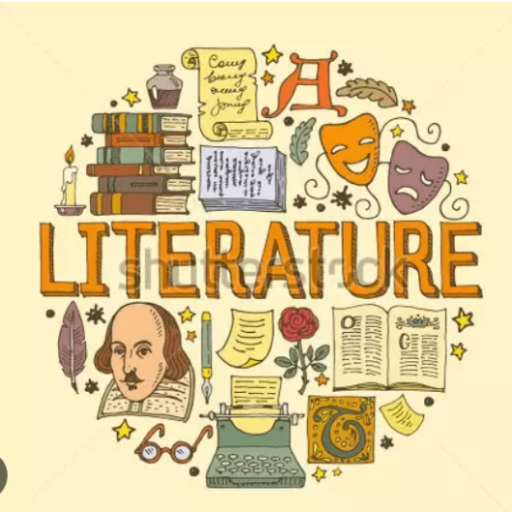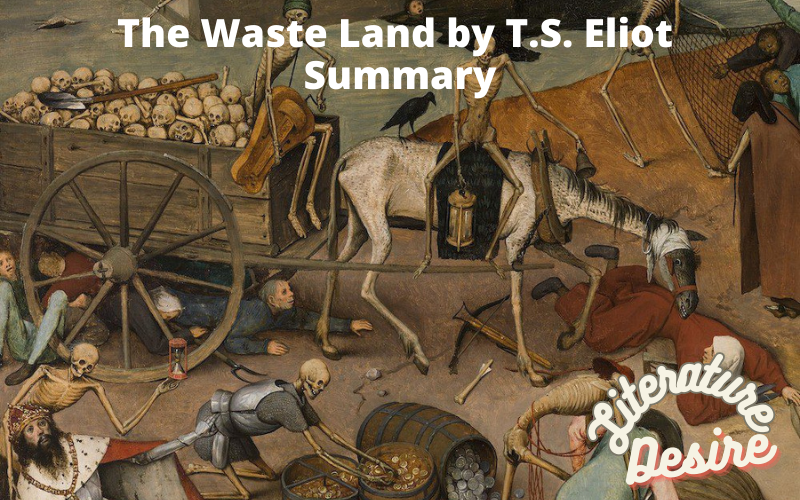Welcome to our comprehensive summary of “The Waste Land” by T.S. Eliot. This iconic poem, published in 1922, is considered a cornerstone of modernist literature.
With its fragmented structure, diverse voices, and exploration of themes such as disillusionment and cultural decay, “The Waste Land” remains a challenging yet deeply rewarding work.
Advertisement
In this article, we will delve into the intricacies of the poem, providing a detailed summary and analysis that will shed light on its profound impact on 20th-century literature. So, let’s embark on this journey through the Waste Land of T.S. Eliot’s imagination!
Advertisement
The Waste Land by T.S. Eliot Summary: Exploring the Modernist Masterpiece
The Waste Land by T.S. Eliot Summary
“The Waste Land” is a complex and multilayered poem that defies a simple linear summary. It weaves together various voices, historical and mythological allusions, and a fragmented narrative structure.
Advertisement
However, at its core, the poem explores the disillusionment and spiritual barrenness of post-World War I Europe.
Advertisement
Eliot employs a wide range of literary techniques, including intertextuality, symbolism, and allusion, to convey these themes and create a sense of fragmentation that mirrors the state of the modern world.
Let’s delve deeper into the summary of “The Waste Land” by T.S. Eliot through the following headings and sub-headings:
The Waste Land by T.S. Eliot Summary: Part I – The Burial of the Dead
Fragmented Narratives and the Symbolic Landscape
In this section, Eliot sets the tone for the rest of the poem by presenting a desolate and spiritually barren landscape.
The poem begins with the famous line “April is the cruelest month,” which immediately challenges conventional notions of rebirth and rejuvenation associated with spring.
Eliot draws upon various mythological and religious allusions, including the story of the biblical figure Tiresias, to explore themes of death, decay, and resurrection.
Urban Decay and Disillusionment
Eliot vividly depicts the decay of modern urban life, particularly in London. Through vivid imagery and rich language, he portrays a fragmented and morally bankrupt society.
The people inhabiting the city are portrayed as isolated individuals who struggle to find meaning and connection in their lives. This section culminates in a series of disjointed vignettes that reflect the chaotic and fractured nature of modern existence.
The Waste Land by T.S. Eliot Summary: Part II – A Game of Chess
Failed Relationships and Hollow Interactions
This section delves into the complexities of human relationships, particularly the disintegration of love and communication.
Through a series of contrasting scenes, Eliot explores the emptiness and futility that often underlie romantic encounters.
The game of chess becomes a metaphor for the power dynamics and emotional manipulation that pervade these interactions.
Social and Sexual Stereotypes
Eliot confronts societal expectations and stereotypes surrounding gender and sexuality. He presents a range of female voices and perspectives, challenging traditional notions of femininity and highlighting the oppression and objectification faced by women.
By juxtaposing the story of Philomela, a figure from Greek mythology, with modern sexual encounters, Eliot emphasizes the timeless nature of these issues.
The Waste Land by T.S. Eliot Summary: Part III – The Fire Sermon
Spiritual Desolation and Temptation
In this section, Eliot draws heavily on the Buddhist concept of desire and attachment. He explores the destructive power of sexual desire and the spiritual emptiness it can lead to.
Through vivid and sensual imagery, Eliot creates a striking contrast between the physical and spiritual realms, highlighting the temptation and disillusionment that plague modern society.
The River Thames as a Symbol of Decay
The River Thames, a prominent motif in “The Waste Land,” symbolizes the decay and corruption of modern civilization.
Eliot presents the river as a polluted and lifeless entity, reflecting the degradation of the natural world and the loss of vitality in society.
The river also serves as a metaphorical journey, representing the individual’s quest for spiritual redemption.
The Waste Land by T.S. Eliot Summary: Part IV – Death by Water
Mythical and Historical Drowning
This section explores the motif of drowning, both in mythological and historical contexts. Eliot alludes to the myth of the Sirens, who lured sailors to their deaths, as well as the historical tragedy of the sinking of the Titanic.
These references underscore themes of temptation, destruction, and the transience of human existence.
The Search for Identity and Meaning
Eliot delves into questions of identity and selfhood, presenting fragmented narratives that reflect the disintegration of personal identity in the modern world.
Through references to Shakespeare’s “The Tempest” and the story of the drowned Phoenician sailor, Eliot suggests that true selfhood can only be found through spiritual transformation and surrender.
The Waste Land by T.S. Eliot Summary: Part V – What the Thunder Said
Apocalyptic Visions and Spiritual Renewal
The final section of “The Waste Land” portrays a post-apocalyptic landscape and offers glimpses of hope and renewal amidst the devastation. Eliot incorporates religious and mythological references, including the biblical story of the Tower of Babel, to emphasize the need for spiritual awakening and the restoration of a fragmented world.
Resurrection and Redemption
Eliot concludes the poem with a message of redemption and the possibility of spiritual rebirth. Through the image of a thunderstorm and the sound of “OM,” a sacred syllable in Hinduism, he suggests the potential for renewal and regeneration. This section offers a glimmer of hope amidst the Waste Land, leaving the reader with a sense of possibility and the potential for transformation.
Conclusion: The Waste Land by T.S. Eliot Summary
In conclusion, “The Waste Land” by T.S. Eliot is a profound and complex poem that explores themes of disillusionment, cultural decay, and the search for redemption.
Through its fragmented structure, diverse voices, and rich intertextuality, the poem challenges readers to confront the spiritual and moral wasteland of the modern world. Eliot’s masterful use of literary techniques and powerful imagery leaves a lasting impact, making “The Waste Land” a timeless masterpiece of modernist literature.
Frequently Asked Questions
The main themes of “The Waste Land” include disillusionment, spiritual decay, cultural fragmentation, and the search for redemption in a morally bankrupt society.
“The Waste Land” is hailed as a modernist masterpiece due to its innovative use of fragmented structure, diverse voices, intertextuality, and exploration of complex themes relevant to the modern human condition.
The title “The Waste Land” evokes images of desolation, decay, and spiritual barrenness. It reflects the fragmented and disillusioned state of post-World War I Europe, as well as the personal wasteland experienced by individuals in a modern society devoid of meaning.
T.S. Eliot employs various literary techniques in “The Waste Land,” including allusion, symbolism, intertextuality, juxtaposition, and fragmented narrative structure. These techniques contribute to the poem’s depth and complexity.
“The Waste Land” captures the disillusionment, cultural decay, and sense of loss prevalent in post-World War I Europe. It reflects the shattered illusions and fragmented identities of individuals grappling with the aftermath of war.
The fragmented structure of “The Waste Land” mirrors the fragmented and disjointed nature of the modern world. It reflects the lack of coherence and meaning in a society that has been shattered by war and disillusionment.

